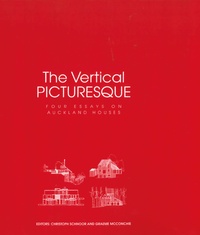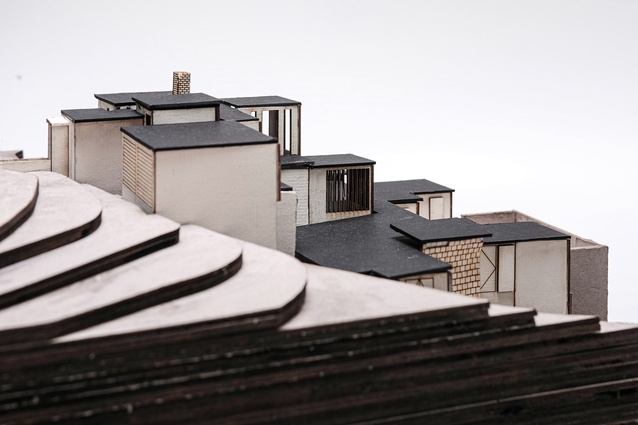Book review: The Vertical Picturesque: Four Essays on Auckland Houses
Every book about architecture should be like this: uncomplicated in its purpose, content and structure, beautiful to look at, and short. Indeed, it might be that most books intended for an architectural public don’t need great length; knowing that readers can relate drawings to photographs, a book’s editors can rely on images and, thus, minimise the text.

The Vertical Picturesque is a good example of such a book, taking the form of a collection of biographies of the architects, short descriptive essays, and illustrations of four Auckland houses built in the 1960s and 1970s. The houses are all early works from a select group, with one each by Ian Burrow and Roger Walker, and two by Claude Megson.
The editors, Christoph Schnoor and Graeme McConchie, are senior academics at Unitec. They and their student contributors are to be congratulated for both the concept and the execution of this project; it cannot have been a simple matter to have gained access to these houses, organised a collaborative research-based exercise and produced this book. They have explored modernism’s narrative in New Zealand to revisit these four houses, built (mostly) with modest budgets and ordinary materials, and all but one located in Auckland’s less-fashionable suburbs (Megson’s Wong House in Remuera is the exception). No glamorous island sites here: no unlimited funds and unpriceable sea views. These are real, but also utterly exceptional, houses.
The architects drew on the liberating impact of Plischke, Newman and the Auckland-based Group Architects, but their works move well away from the utilitarian pragmatism of low-pitched, all-covering roofs and merged domestic functions favoured by New Zealand’s first generation of modernists.
The houses of the “vertical picturesque” started another dialogue about form, expression and identity. They celebrate Auckland’s light, its openness to experiment and its occasional exposure to a raw, natural environment. Where Group houses sometimes suggest a kind of dour Presbyterian severity, these houses are witty, expressive and fun; where their modernist predecessors are functional, these reflect a growing confidence in a richer New Zealand design culture. Without caprice, the houses offer their owners the commodity and delight that stricter editions of modern architecture don’t always deliver.
Illustrations include original drawings and photographs, supported by new photos, drawings and models (physical and digital) to document the studies. The book concludes with a compact but wide-ranging essay by the editors that locates the architects’ ideas in history and theory. The extreme fragmentation of domestic space that characterises these houses reflects their designers’ conscious acknowledgement of these modernist influences. This includes references to Pugin’s “picturesque utility” (the term borrowed from Barry Bergdoll), the Antipodean timber gothic aesthetic (Mountfort and Thatcher), Aldo van Eyck, Louis Kahn, Charles Moore and the writings of Colin Rowe; all of these are credited in a synthesis of the book’s subject matter.

It is one of the book’s great pleasures to be reminded of the witty and perceptive words used by earlier visitors to these houses: for example, Patrick Clifford’s observation that these architects not only had a sense of humour, they were also “constantly prodding at, and challenging (…) authority and orthodoxy”; or Gerald Melling’s perception of the “giddying verticality of the (kauri) trees”.
In such a delightful book, it seems churlish to complain but a little more editing – one more cut, possibly – could have removed the last few gremlins and another stab at the drawings could have included a more readable plan of Burrow’s Cole-Davis House. However, the authors have achieved a precise and spare account of some extraordinary buildings. Readers are left with a sense that, like the best architecture, the book leaves nothing out and nothing added would improve it. What about a series based on this model?












